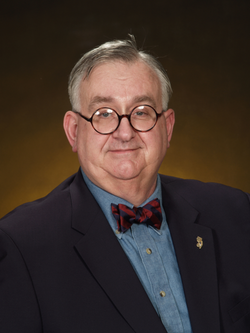It has been a busy month for the team here at Respondersafety.com. Although it has also been a relatively safe period of time out there on the highways of North America, that doesn't mean we here at the Institute have been inactive, nor have we become complacent.
I hesitate to mention it, but it has been a few weeks since last we reported a serious highway-related incident. We here at Respondersafety.com would like to think that we are having an impact upon the problem. However, we are all just a bit too new to the business to be making any claims about success. Not yet, anyway. In the journey of 10,000 miles, we have taken but the first few fitful steps.
In spite of that fact, there is a bit of good news to share. The U.S. Fire Administration has funded our efforts for another year. They like what we are doing and want us to keep chugging along. We have also been included as a partner in their efforts to reduce firefighter deaths from highway related incidents. Along the way, Steve Austin, Ron Moore, Jack Sullivan, Chief Bill Peterson and I have all been out traveling the circuit, touting the merits and singing the praises of our lifesaving efforts.
Ron Moore's highway safety SOP's have been up and running on our website for a couple of months now. They have recently moved into a second-generation version, thanks to Ron's dedicated efforts.
Steve Austin is working out the final details for setting up a fulfillment system to distribute our highway safety awareness videotapes. These informative tapes have been developed in concert with our friends at the Volunteer Fireman's Insurance Service (VFIS). We will let you know how to get your free copy as soon as the system is in place.
I hope that you had the opportunity to watch the episode of Third Watch on the NBC television network that dealt with a struck by incident. As I watched the story unfold in front of me, I was astounded by how real it all seemed. The manner in which the characters operated on the elevated highway during the incident seemed all too real to me.
Many of the actions taken seemed mirror events at incidents I have attended. People seemed to move about oblivious to the dangers passing by them. When the actual moment of the vehicle strike occurred, it seemed to flow logically from the situation wherein it occurred. I could almost see myself doing the same thing as the paramedic who was struck by the passing car.
The highway emergency operating environment is not one where we can move about without regard for what is going on around us. Standard Operating Procedures must be utilized, and all of us must be trained to operate safely out there where the cars are rolling rapidly past us. Once were are on scene, we must keep our wits about us and move about in a state of heightened awareness. The highway is no place to operate as though we were in the midst of a daydream. Death and serious injury are but a step away.
We here at the Institute want to commend a man from New Jersey for his outstanding efforts in the legislation and instructional worlds. Retired Fire Chief Bob Edwards, of the Bloomsbury, New Jersey Fire Department, has become a forceful advocate for highway safety issues. He has been working with members of the state senate and assembly to create an awareness of our issue among the members of both houses.
Bob has worked with State Sen. Lance's office me since last June. He has also been in frequent contact with Assemblywoman Myers office. They had been collecting data to build a legislative case and have been requesting clarification of issues or more information on the topic of highway safety. A bill has been drafted for introduction in the Senate. Work is moving along on a companion bill for the Assembly.
It would appear that Chief Edwards has succeeded in having the two legislative offices communicating with each other to see who will take the lead role. Bob reported to me that one bill will certainly dovetail onto the other. Amongst the data gathering, Bob provided information about Illinois, Virginia, and Michigan legislation having been passed. He also referenced the DOT MUTCD chapter 6-I proposed changes and the model SOP for responders on the web.
Kudos from all of us are also in order for Jim Garcia of South Carolina for shepherding legislation through both houses of that state's legislature. The final document was signed into law on June 20, 2002. This law sets requirements for drivers and provides penalties for violating the provisions of this new legislation.
We need more people like Bob Edwards of New Jersey and Jim Garcia of South Carolina. We here at Respondersafety.com can only do so much. We must all act together if we are to move towards our highway safety goals.


